Produced by the legendary George Pal – known for such classics as When Worlds Collide and The Time Machine – this esteemed filmmaker took a vacation from the worlds of science fiction and entered the realm of fantasy with The Wonderful Word of Brothers Grimm, a movie that worked as both a fairy tale and a biographical picture. Directed by Henry Kevin – with Pal himself directing the fairy tale sequences – this film gave us a rather whimsical version of how the Grimm Brothers, Wilhelm (Laurence Harvey) and Jacob (Karlheinz Böhm), became known far and wide as collectors and purveyors of some of the most beloved fairy tales known to man. It would be fair to say that any historical accuracy this film has – as pertaining to the real Brothers Grimm – is purely accidental.
"Jacob, I hope one day to be played by Matt Damon."
The film’s structure has Jacob and Wilhelm trying to make ends meet while working for The Duke (Oskar Homolka) – a man eager to have them write a family history that would make him look good in the eyes of the King – and in between these moments of economic strife, we are treated to three fairy tales, that we either see Wilhelm tell his own children or ones he overhears from a kindly old woman. As I stated earlier, the biographical aspect of The Wonderful World of Brothers Grim is about as realistic as the fairy tales themselves, but a movie about court librarians doing endless hours of research wasn’t going to appeal to children – they came to see fantastical tales of far off places, not people doing homework – and fantastical tales is exactly what George Pal gave them.The Dancing Princess
The first fairy tale deals with a young huntsman (Russ Tamblyn) who wishes to win the hand of the beautiful Princess (Yvette Mimieux). To do so, he must discover how the Princess is wearing out her slippers each and every night – this is apparently driving the King (Jim Backus) to distraction – but if he fails to uncover the secret to this mystery, he will lose his head. Lucky for the huntsman, he knows a kindly gypsy woman (Beulah Bondi) who provides him with a cloak of invisibility, thus allowing him to follow the Princess through a secret passage and smuggle himself aboard her coach, which takes her deep into the countryside where she dances with a caravan of gypsies. With a domino mask – also provided by his gypsy friend – the huntsman joins in on the dance, and wins the heart of the princess. Later the next morning – as he is about to be beheaded for apparently failing to solve the mystery – he shows the King the hidden passageway, and reveals to the Princess that he was her masked dancing partner. And they all lived happily ever after."Tale as old as time, clichés as old as rhyme."
It is interesting to note that we see Wilhelm almost apoplectic over the fact that some people have heard the story that it was a farmer and not a huntsman, while others state they were told it was a fisherman. This sets him on the path of wanting to see these oral stories written down, yet the strange thing here is that this movie takes a version of the tale that the Brothers Grimm didn’t publish. Their version of the tale was called The Twelve Dancing Princesses – where the princess danced with twelve princes – while the version that dealt with only one princess was from the cultural region of Hesse. This change was most likely due to budgetary constraints – you can save a lot of money by cutting out twenty-two other dancers – and it also streamlined the tale, allowing the running time of the movie to be kept at a reasonable length.Note: This was one of two feature films that used the wide screen Cinerama three camera process – the other one being How the West Was Won – and we are often subjected to long “exciting” point-of-view shots that I'm sure would have wowed theater-goers back in the day, but they don't work quite as well on a television screen.
The Cobbler and the Elves
Of the three fairy tales depicted in The Wonderful World of Brothers Grim, this one is probably the most well-known – having previously been adapted by Tex Avery for his cartoon “The Peachy Cobbler” (1956) and Friz Frekeng’s “Yankee Dood It” for a Looney Tunes cartoon short that came out the very same year – and it also diverges rather far from the Grimm fairy tale. In this cinematic version, we get a poor shoemaker (Laurence Harvey) spending all his time making toys for the children across the street – who live at the local orphanage – completely neglecting his angry paying customers, so it’s up to the elves to do the work while the cobbler sleeps. As this tale now takes place at Christmas – a story point that has never appeared in any other version – the cobbler sneaks the elf-made toys into the orphanage on Christmas Eve so the children can be surprised in the morning. This version seems more like the origin story for Santa Claus than it does the Grimm Fairy Tale it is based upon.Note: The Elves in this version are toys made by the cobbler – that come to life while he sleeps – so not only do we have the cobbler playing Santa Claus, but the elves are closer to being Pinocchio than they are any type of fairy tale creature.
The Singing Bone
In the third and last fairy tale depicted in this movie, we get a fantasy adventure dealing with a cowardly knight (Terry-Thomas) and his loyal servant (Buddy Hackett), as they venture forth to slay a dragon that has been terrorizing the kingdom. The knight sends his servant into the dragon’s lair – armed with nothing but a simple lance – to see if the dragon is at home. There is a lot of bumbling around in the attempt to kill the dragon – hilariously acted by the brilliant comedians Terry Thomas and Buddy Hackett – but when the servant kills the dragon, the knight then murders him so that he can take all the credit, and receive half the kingdom as reward. Seasons go by until one day, a young shepherd picks up what he thinks is a stick — with a bit of a carving, it makes for a nice flute — but that was no stick, it was a bone from the corpse of the servant who was so callously buried under an apple tree. When the shepherd plays the flute, it begins to sing on its own – revealing its true nature and exposing the knight’s foul deed – and once brought before the King (Otto Kruger), the knight is forced to admit his crime and state that he is sorry for his actions. The flute then leaps out of the shepherd’s hand – quickly forming into a complete skeleton – before eventually transforming into the servant, now alive and well. The servant is awarded half the kingdom — which was the standard fairy tale payment for services rendered — and the knight is now doomed to the position of serving his former retainer.Buddy Hackett appears to have lost some weight.
This movie version of the tale is even a greater departure from the original Grimm’s fairy tale, as there was no dragon in the original – it was a large boar that was terrorizing the kingdom – and it was two brothers sent out to kill it, not a knight and his servant. In the Grimm version, the younger of the two brothers — being armed with a spear given to him by a dwarf — was able to track down and kill the boar, but when the older brother learns of this, he murders his sibling so that he can marry the Princess himself. When the shepherd’s bone flute reveals the truth — as it did in this film version — the older brother is executed and the remains of the younger brother are buried in a beautiful graveyard. This is the typical dark ending one expects from a Brothers' Grimm fairy tale. And to be perfectly honest, a fight with a dragon trumps a fight with a boar — no matter awesome that particular boar was supposed to be — so I can readily get behind the changes made here.Note: The stop-motion animation – used to bring the dragon to life – was created by effects wizard Jim Danforth, and it has a very goofy “Puff the Magic Dragon” feel to it. The design of the dragon is rather fun — in a comical charming sort of way — but it is nowhere near as threatening or as detailed as what you would find in a Ray Harryhausen Sindbad movie.
The film portrays Jacob Grimm as the realist, while his brother Wilhelm spent much of his time with his head in the clouds – when not paying a local flower seller for a fairy tale – but in fact, the two brothers were equally fascinated with the rich history of Germanic folk tales. Sadly, a film has to have conflict – an egomaniacal Duke can only provide so much – and we spend plenty of time with the pragmatic Jacob railing against his fanciful brother. We also spend quite a bit of time with Jacob and his burgeoning love interest Greta Heinrich (Barbara Eden) – another strange choice as the real Jacob Grimm never even got married – and this all adds to the film’s heavy 135 minute running time. Kids today will most likely love the three fairy tale segments – the stories and the effects used to bring them to life are charming and still quite effective – but the biographical elements of the movie will most likely bore kids to tears. So if you come across this film some night on Turner Classic Movies – that’s how I was able to revisit it – check it out, but if you have kids with you, make sure to keep their expectations low.

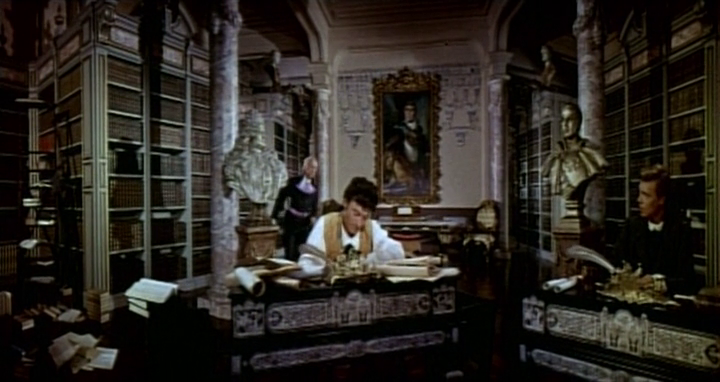
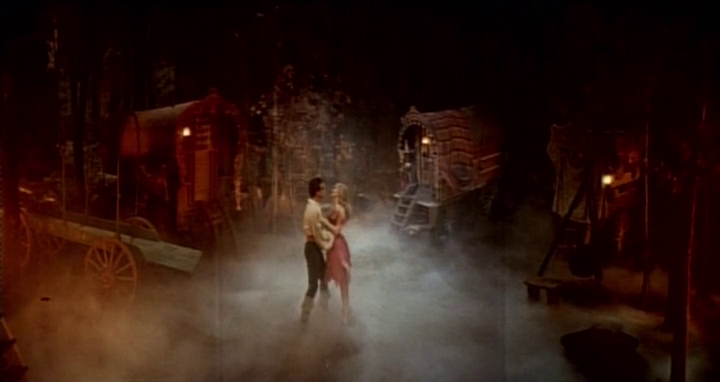
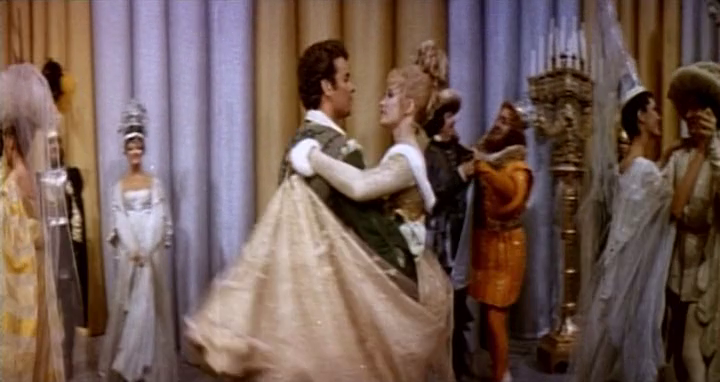
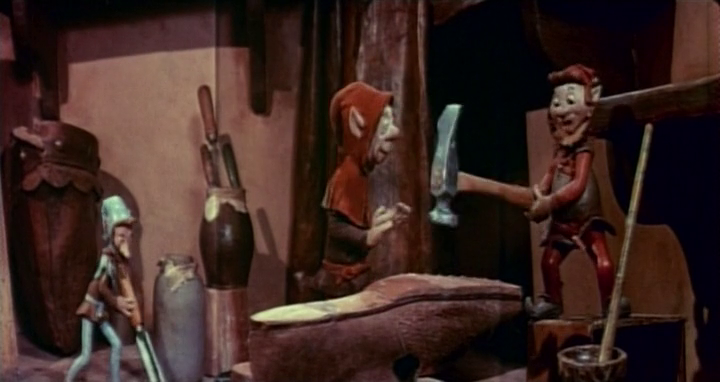
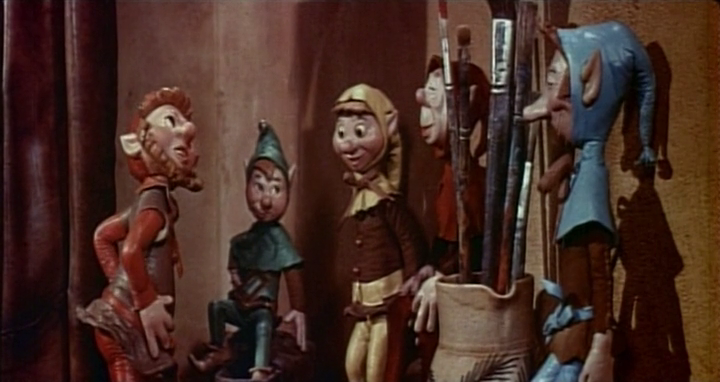

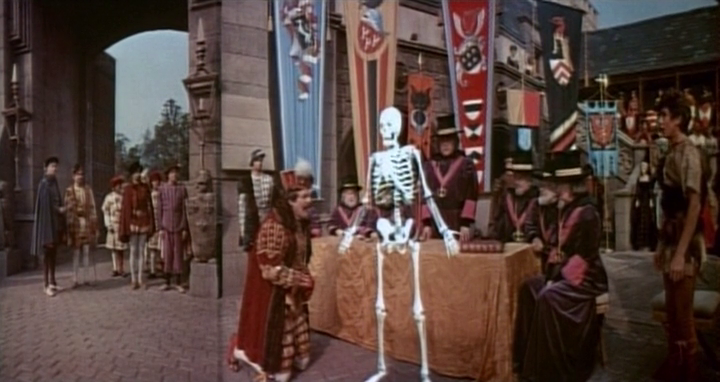
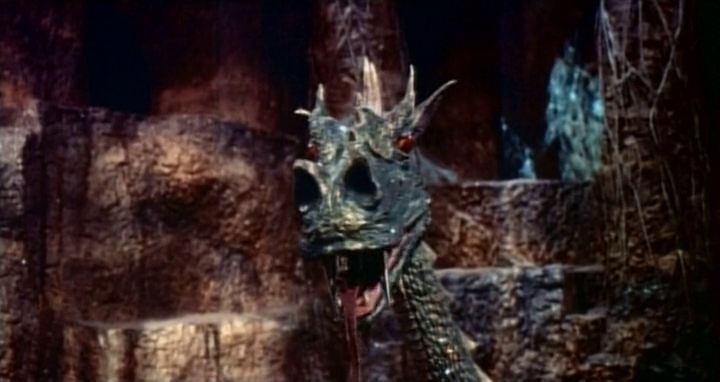

No comments:
Post a Comment